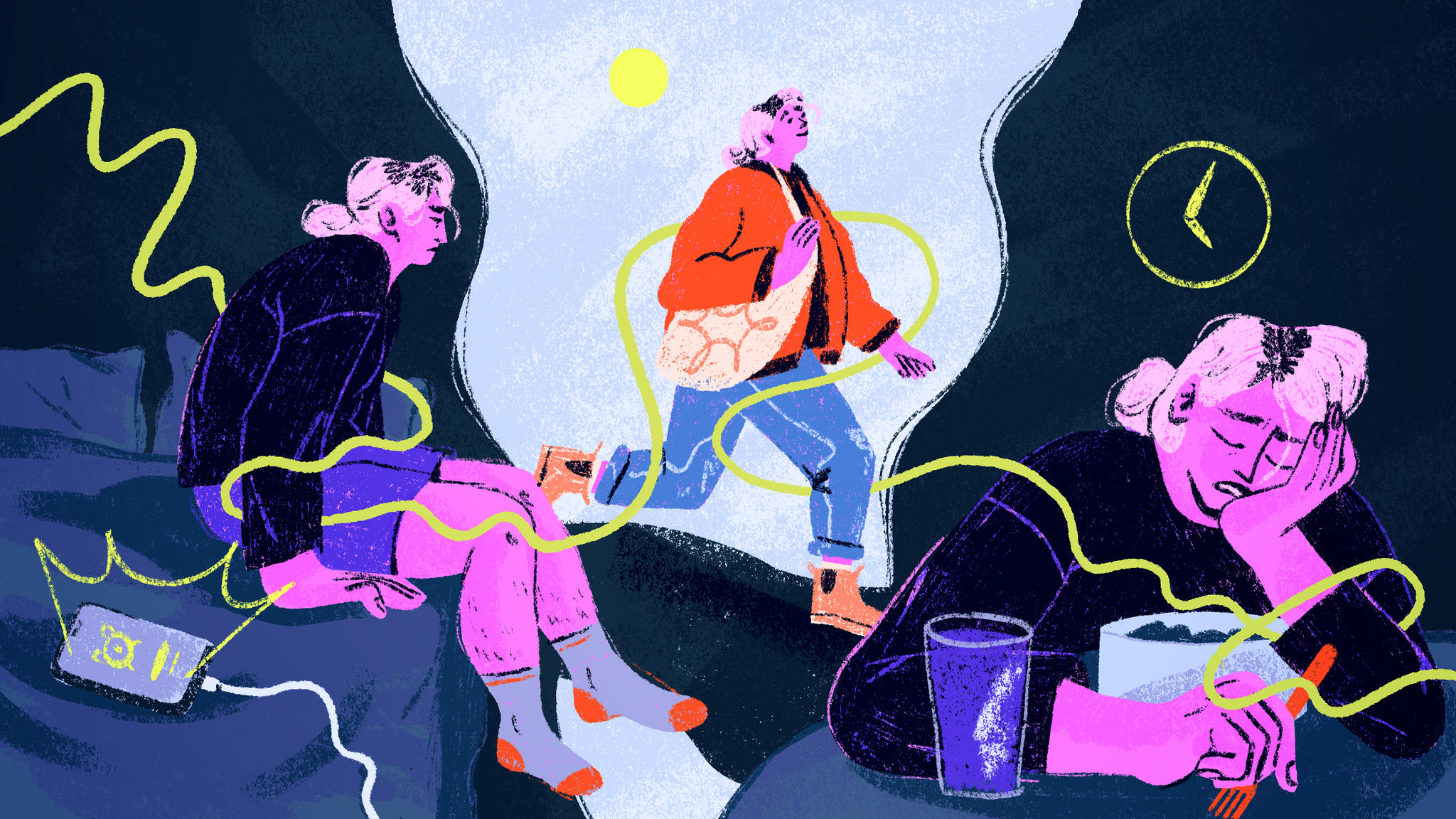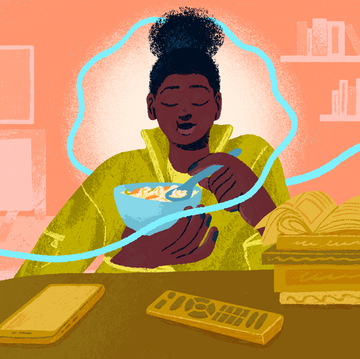Over the past two years of living through a pandemic, caring for our mental health has become more essential than ever before. The way we treat our bodies, how and with whom we spend our time, and what thoughts are center stage in our minds are vital. In the monthly Shondaland series A Path to Well-Being, we’re sharing science and strategies to help you better understand and manage your well-being in 2022.
Here’s some good news: When we “fall back” to standard time in the United States and Canada on November 6, we’ll gain an hour of sleep. Now, the bad news: The truncated days and less abundant sunshine can lead to the effects of seasonal affective disorder, a form of depression triggered by the change of seasons.
You don’t need to qualify for a clinical diagnosis to notice a dip in your mood with the shift back to standard time. Such change to our daily schedule can throw off our circadian rhythm, the internal clock that regulates mood, sleep, and appetite.
“Seasonal affective disorder is a clinical diagnosis, but many of us are going to feel those symptoms a little bit,” says Barbara Nosal, a psychologist and chief clinical officer of Newport Healthcare. “We’re not as motivated or looking to engage because the sun isn’t shining, the days have gotten shorter, or the weather’s a little cooler.”
Symptoms of seasonal affective disorder (SAD), which affects about 5 percent of American adults, are similar to those of depression: loss of interest in once-pleasurable activities, changes in eating and sleeping patterns (too much or too little), fatigue, low mood, difficulty concentrating, and a feeling of hopelessness.
“The reason we’ll know that it’s SAD is we’re going to be looking at this occurring in people at the same time of year for the same period of time,” Nosal explains. SAD symptoms typically last four to five months, according to the National Institute of Mental Health, though not everyone with the condition experiences symptoms every year.
Most people with SAD feel symptoms during the winter months, but a small percentage are affected by spring’s shift to sunnier days. Scientists believe the condition is caused by disruptions to circadian rhythms and fluctuations in neurotransmitters, such as serotonin and melatonin.
SAD is more common in women, people with other mood disorders, and those living in geographic regions far from the equator, where days are significantly shorter and darker in winter. The risk is also higher in people with a family history of mental health conditions, and SAD commonly emerges during adolescence or young adulthood, according to Nosal.
Treatments may include light therapy, cognitive behavioral therapy, and antidepressants. But before we change the clocks, Nosal suggests implementing these strategies to keep your mood light even when the days aren’t.
Soak up rays
If it’s dark when you start and finish your workday, getting some midday sunlight — even through a window — can help improve mood and regulate circadian rhythm. Consider an outdoor walk on your lunch break, Nosal says, which can also help with the vitamin D deficiencies common during winter months. Our bodies synthesize vitamin D through exposure to sunlight.
People being treated for SAD may be advised to sit in front of a light box that mimics outdoor light every morning for 20 to 30 minutes. “It really does boost melatonin levels,” Nosal says, “and you’re able to get your internal clock back in order as far as sleeping and getting up on time.”
You can give yourself a similar lift by making your home or work environment as bright as possible. Open the shades, turn on the lights, and allow as much natural light in as you can. “If you can’t bring in the sunlight,” Nosal says, “bring in the artificial light.”
Embrace nature
Both exercise and spending time outdoors are excellent for overall well-being. Studies show that being in nature reduces stress, increases happiness, improves sleep, and may reduce the risk of mental illness. A lunchtime walk in a park offers an ideal mood-boosting combination of exercise, nature, and daylight exposure. All three elements increase feel-good brain chemicals and help balance circadian rhythm.
Even in urban areas, spending time outside — especially early in the day — can provide a lift. You can receive a digital dose of nature too. Researchers have found that merely looking at images of green spaces on-screen or listening to natural sounds can ease stress levels and improve mood.
Plan sunny getaways
Nasal suggests that those afflicted with SAD need winter vacations to warm, sunny destinations “even if it’s just a few hours or a few days.” She says that multiple, quick trips are more beneficial than one long getaway to maximize sunshine exposure throughout the season.
“What I have found in working with people is shorter, more frequent [trips are] better than one time,” Nosal explains. “When they go away for two weeks, they’ll feel wonderful because they’re in the sun, but then they get back, and they’ve got the rest of the winter to deal with.”
Look out for loved ones
“If someone, as an adult, has lived in one of these geographical locations where the days are much shorter and their exposure to sunlight is decreased during those winter months, chances are they’re not going to end up with SAD,” Nosal says, “but for teenagers and young adults, that’s where we see it more.”
Because young people are at the highest risk of an initial SAD episode, it’s important to be aware of behavioral changes in the teens in your life. Nosal urges parental figures to keep communication open with young adults even if they hide out in their rooms and are reluctant to look up from their laptops or cell phones.
“The parents may not be having a lot of interactions, so they have to ask questions,” Nosal says, particularly if they notice changes in a child’s mood. “You don’t want to be too intrusive, but you want to let them know, ‘I’m here to support you.’”
Sandy Cohen is a Southern California-based writer, health and wellness coach, and host of the Inner Peace to Go podcast. Follow her on Twitter @YouKnowSandy.
Get Shondaland directly in your inbox: SUBSCRIBE TODAY
















